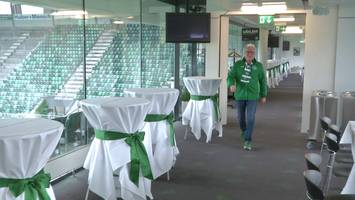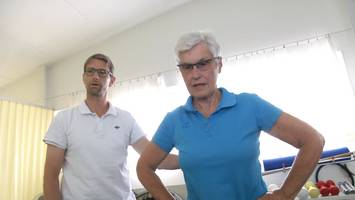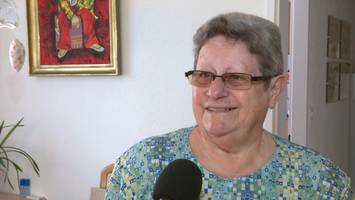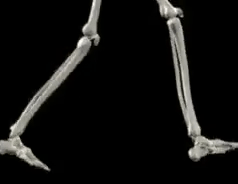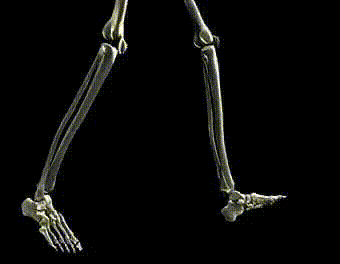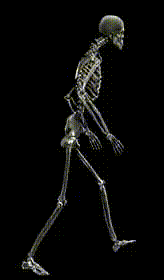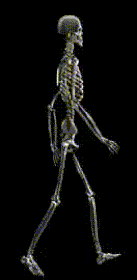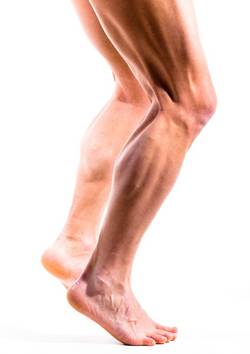Knee prosthesis/total knee prosthesis/knee endoprosthesis/knee joint prosthesis/artificial knee joint
Knee osteoarthritis can progress so far that therapy is not able to alleviate the symptoms (e.g. pain) and that a joint replacement is the only solution. Even though this operation is virtually routine today, it is still a major intervention. After a knee operation with the implantation of an artificial joint, careful knee rehabilitation is essential for the prosthesis to last as long as possible. Gait, coordination and strength training, and improving mobility are just some therapy focal points. Avoiding impact that could damage the new joint is of particular importance. Read more under ‘Application tips’.
Definition
An artificial knee is an implanted prosthesis (endoprosthesis) to replace the functions of the knee joint and/or its supporting apparatus after a loss of functionality. Artificial knees are used as a surgical therapy mainly in cases of severe degenerative joint disorders (knee osteoarthritis) and after knee injuries in order to restore the ability to move without pain and to improve knee joint stability (in case of ligament instabilities). Partial or total knee prostheses are used, depending on the severity of damage. After the prosthetic hip joint, the artificial knee is the second most common endoprosthesis with about 175,000 operations carried out in Germany each year (first-time implants, 2009).
Causes
Long-term consequences – trapped in a vicious circle
Pain caused by osteoarthritis can lead to relieving postures, subsequently causing excessive strain on the joints and other body structures or leading to secondary disorders or secondary osteoarthritis. Furthermore, pain leads to a reduction in exercise and those who move less automatically put on more weight. This in turn has a negative effect on osteoarthritis complaints. Many of those affected by degenerative joint disease are caught in a downward spiral. The main therapy objective is to break free from this downward spiral.
When the knee joint is severely worn, a knee replacement operation is often the last chance to escape the vicious circle of the downward spiral and regain quality of life.
But beware, an artificial knee wears faster than a natural joint when the body/knee is put under improper strain. This makes it especially important to place only gentle loads on the body with a joint replacement, so that it does not get caught in a downward spiral again!
Conventional therapy
- Physiotherapy: Reduction of swelling, coordination and strengthening of the musculature, improved mobility, scar mobilisation and more.
- Reduction in body weight if overweight
- Massage, heat/cold applications
- Pharmacological treatment
It’s not only the cushioning effect that helps alleviate pain. When standing the soft, elastic supporting underlay, one automatically keeps moving very slightly. When standing and walking on soft, elastic materials, the core stability musculature has to make a major contribution in order to stabilise the joints. Strong core stabilising musculature ensures an upright posture, resulting in more precise movements in the joints. Lack of exercise due to pain results in long-term muscle loss (amyotrophia). Signs of excessive strain in the knee joint can develop more quickly as a result. The ability to stabilise the joints under load can be improved further through proprioceptive, sensorimotor and coordination training on an unstable surface. This also prevents the knee from wearing as quickly after the operation. Training the core stabilising musculature is easy to integrate into everyday life by wearing the kybun shoe.
Attention! Short-term effects are often confused with lasting effects.
The adjustment processes in the body triggered by the kybun shoe can take months or even years. Achieving lasting change is a protracted process.
Despite that, the effect of the soft, elastic material can also be felt quickly, for example in the relaxation of tense muscles and the alleviation of pressure points. These short-term effects must not be confused with the effects in the long run, since the long-term adjustment process cannot progress far enough in a week to be perceptible.
Short-term effects, on the other hand, can disappear again just as quickly as they came, or can even turn into complaints if you do not take the necessary breaks in the beginning.
Therefore, it is important to understand that an initial reaction and a reduction of the positive feeling in the first few weeks with the kybun shoe does not mean that the kybun shoe is no longer working, but merely that the short-term sense of well-being is declining!
Prevention with kybun
Everyone knows that the body exhibits signs of wear over time , and that problems while walking and running are bound to occur sooner or later. Yet most people only start to consciously perceive their body as a fragile and transient structure once they experience problems. In most cases, however, it is already too late because irreversible damage such as cartilage wear has already occurred.
Therefore it is important not to wait until you experience pain before you act. The kybun mat and kybun shoe help protect the joints and prevent osteoarthritis even in youth.
Initial reactions
kybun exercises
Application tips
- Walk upright
- Do not make your steps too long
- Extend the knee joint in the stance phase as well as possible (not to be confused with over-extension!)
- Everyday/leisure: Walk with the kybun shoe or use the kybun mat as much as possible. Take note of fatigue > perform the kybun exercises regularly and take a short break if needed.
- Job: Sit as little as possible. Alternate sitting and standing in the beginning, and take along replacement shoes to change into
- If you feel unsafe/too unstable in the kybun shoe even after a test walk, we recommend a kybun shoe model with a lower rebound effect. These have a somewhat wider sole in the area of the midfoot, providing added stability. Seek advice from your local kybun expert.
- If you find the kybun model with lower rebound effect too unstable for you as well, we recommend the kybun mat. You can choose the thickness you are comfortable with (the thicker, the less stable, the more intensive the training). You can also hold on to a fixed object. This can be helpful especially in the beginning after the operation, until you regain confidence in the knee.
- Precise movements are essential with artificial knees. Pay attention to exact movements and be sure to take a break in case of fatigue or weakness. Lateral/medial rolling of the ankle joint on the soft, elastic material has to be corrected so that the load is applied to the foot and knee with proper axial alignment. Read more under ‘Lateral/medial rolling of the ankle joint’.
- Contact a kybun dealer you trust if you have further questions, feel insecure or if there is no alleviation of pain when using the kybun shoe even though you are following the tips.
Opinions/customer testimonials
The most astounding thing with my patient was that she was practically pain-free within a week. This is enough to suggest that the success is a result of wearing the kyBoot. She wasn’t in pain anymore, she was able to move more easily and her movements were more symmetrical again. We were able to focus on the actual problem again, which was essentially getting her knee joint to work properly – the reason that she actually came to me in the first place.
I thought that was a good thing. I can't imagine it won't help. It was pointed out to me that they weren’t hard on the bottom. I suppose it’s just logical that that would make things better. Improvement is practically a given with this padding underneath.
My wife purchased kybun shoe (Bern) a few weeks ago and LOVES them! She was suffering a lot of pain in her feet related to a knee replacement some time ago and says she is enjoying a lot of relief. Now her co-workers want a pair!
[1]:Pschyrembel, medizinisches Wörterbuch, 261. Auflage

